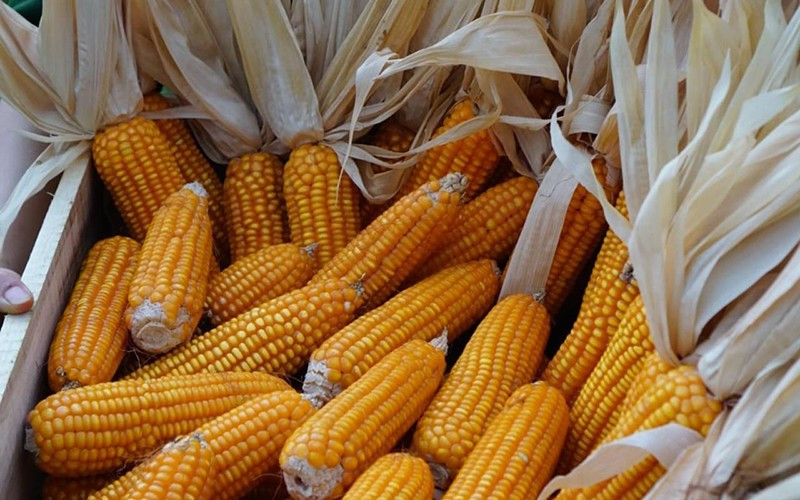Notably, in the energy market, the prices of two crude oil products increased for the third consecutive week. On the other hand, the positive weather in Brazil has eased the concerns of coffee traders around the world, boosting the selling pressure in the market. At the close, the dominant buying pressure supported the MXV-Index to increase by 0.3% to 2,298 points.
Green covers the energy market
At the end of last trading week, buying power dominated the energy market. Notably, global crude oil prices saw their third consecutive week of gains. The latest decisions from the White House continued to have a significant impact on oil prices.
By last week's close, Brent crude oil prices had risen to 73.63 USD per barrel, marking a 2.04% increase, while WTI crude oil prices also climbed 1.58%, closing at 69.36 USD per barrel. Notably, by the end of the trading session on Thursday (March 27), crude oil prices reached their highest levels since early March.
The global oil market saw a major push at the start of the week when US President Donald Trump announced a 25% tariff on crude oil imports from Venezuela. This announcement on March 24 came just days after the White House imposed a series of new sanctions on Iran, aiming to reduce Iranian oil supplies to zero.
Additionally, China is expected to be the most affected by these new sanctions. As the largest buyer of Iranian and Venezuelan oil, Beijing now faces the challenge of finding alternative supplies. Notably, previous sanctions on Iranian crude oil specifically targeted certain Chinese entities, indicating that the US is focusing on oil buyers from sanctioned nations.
Apart from China, countries that import Venezuelan oil include India, Spain, Italy, and Cuba, all of which will need to adjust their oil procurement strategies to avoid additional US tariffs.
This situation forces the largest customers of Iranian and Venezuelan crude oil to seek new supply sources. On a global scale, companies such as Reliance Industries — the operator of the world’s largest refinery complex in India — must also reconsider their supply chains. The company has been importing an average of 2 million barrels of Venezuelan oil per month, accounting for a significant portion of its refining operations.
Concerns over global oil supply shortages were further reinforced by the latest report from the US Energy Information Administration (EIA) released on March 26. According to the EIA, US commercial crude oil inventories fell by 3.3 million barrels in the week ending March 21, down to 433.6 million barrels. Earlier, the American Petroleum Institute (API) also reported a decline of 4.6 million barrels on March 25.
These reductions were significantly larger than market forecasts, with analysts attributing them to increased refinery capacity in preparation for the upcoming peak travel season in the US over the next two months.
On the other hand, growing concerns about escalating global trade tensions served as a major factor limiting the oil market's upward momentum. On March 26, President Donald Trump announced an additional 25% tariff on “all automobiles not manufactured in the US” starting April 3.
Trump also warned Canada and the European Union (EU) that stronger tariff measures could be imposed if their policies were deemed harmful to the US economy.
These announcements sparked dissatisfaction among affected nations. Canadian Prime Minister Mark Carney responded, stating that Canada would take countermeasures against the US tariff barriers.
Coffee and sugar prices plummet
According to MXV, selling forces dominated the industrial commodities market last week. By the close of trading, Arabica coffee prices had dropped by 2.93% to 8,376 USD per ton, while Robusta coffee prices declined by 3.23% to 5,337 USD per ton. Compared to the record highs set in mid-February, Arabica coffee prices have lost more than 1,000 USD per ton, while Robusta has fallen by about 450 USD per ton.
Several factors contributed to the decline in coffee prices last week. In terms of supply, Marex Solutions forecasted that Vietnam’s Robusta coffee production for the 2025-2026 crop year could reach 28.8 million bags, up 7.9% from last year. Meanwhile, Brazil’s Robusta production is expected to reach 25 million bags, a significant 13.6% increase.
Additionally, as of March 28, Arabica stockpiles recorded by ICE had fallen to their lowest level in five weeks, at approximately 771,600 bags. Meanwhile, Robusta stockpiles slightly decreased from their seven-week high on March 25, dropping from around 4,410 lots to over 4,390 lots by March 28. Over the past month, Arabica coffee inventories have been on a downward trend.
In the domestic market, last week, raw coffee prices in the Central Highlands ranged from 132,300 VND/kg to 135,400 VND/kg. As of this morning (March 31), coffee prices stood at approximately 131,200-132,300 VND/kg, unchanged from yesterday but down 1,700 VND/kg compared to the beginning of last week.
Another noteworthy development in the industrial commodities market was the sharp decline in May sugar futures on the New York exchange, which dropped by 3.85% last week. The main reason was weak demand from China — one of the world's largest sugar consumers. Reports showed that China’s sugar imports in February plummeted by 97% year on year, down to just 20,000 tons. This also impacted Brazil’s sugar exports in February, which declined by 5.6% to 39.822 million tons.
In contrast to coffee and sugar, cocoa prices ended the trading week with a strong 3.57% increase, reaching $8,042 per ton. After a steep drop last Friday (down 3.29%), cocoa prices rebounded at the start of the week due to technical buying.
Nevertheless, the global cocoa supply outlook remains positive. According to the International Cocoa Organisation (ICCO), the global cocoa surplus for the 2024-2025 season is projected to reach 142,000 tons — the first surplus in four years — thanks to a 7.8% increase in global production, which is expected to hit a record 4.84 million tons.
















